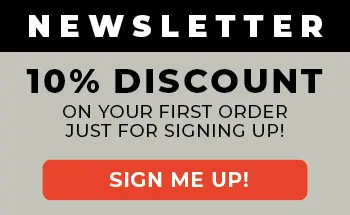Over the past year and a half we have all become pretty familiar with discussing viruses, symptoms and the latest infection hot spots. While the grow room or outdoor cannabis plot provided some kind of sanctuary away from the Covid madness, the increasing prevalence of a cannabis plant viroid named HpLVd threatens to bring all that virus talk into the grow space.
So, if you grow cannabis should you be concerned about HpLVd Growers are also asking what steps they can take to protect their cannabis plants in the grow room from HpLVd infection.
What is HpLVd (Hop Latent Viroid)?
Hop Latent Viroid (more commonly referred to as HpLVd or HLV for short) is often reported as a cannabis virus, but it is actually a pathogenic RNA that is specific to plants and for this reason its correct definition is a ‘viroid’.
As the name suggests, it originated in hop plants, which are part of the same family as cannabis plants. Researchers first discovered the presence of this viroid as long ago as 1987 and it has been identified as an issue in commercial yards, processing hops for the brewing industry, across the world in the years since.
When the viroid jumped to the cannabis plant is anyone’s guess, although it is suspected that it began to take hold in the mid 2010s (around 2014). It was officially identified in 2019 , in a commercial cannabis farm in California and since that time it has been increasingly identified in commercial cannabis crops across the USA.
What Are the Symptoms of HpLVd in Cannabis Plants?
The effect of the HpLVd viroid has spawned a new word in the vocabulary of cannabis growers – ‘Dudding’ (which has in turn spawned the term ‘dudding disease’). Perhaps the reason that it remained under the radar for so long is because the HpLVd symptoms in cannabis plants are similar to symptoms related to other issues ie there is no stand out indication of infection. Nevertheless, common symptoms of this newly highlighted cannabis dudding disease are:
- Stunted plant growth
- Reduced trichome and resin levels
- Smaller buds
- Malformation of leaves
The other problem for cannabis growers is that this viroid is latent in nature (meaning it can be present in the plant for a long time before showing itself) and even infected plants can be asymptomatic, adding to the difficulties of identification.
How do Plants Become Infected with HpLVd ?
HpLVd is the subject of current research as scientists try to unravel the path it takes in attacking weed plants. Two key factors have been identified in speeding up infection rates within crops – lack of adequate grow facility sanitation and the spread of the disease through cannabis clone plants.
It has been identified that the viroid is most likely spread through contact with an infected plant and research suggests that the most likely source of contamination in commercial grow rooms is through cutting equipment (ie pruning tools), which have not been sufficiently sterilized. The other main source of infection appears to be via the use of clones taken from infected mother plants which have been brought into the grow facility.
Those hit hardest by the spread of HpLVd have been commercial growers. It has been argued that one of the reasons that the disease got such a significant foothold on the West Coast of the USA was the lack of safeguards and regulations covering sanitation and inspection/quarantine in commercial cannabis growing operations in the early days of cannabis legalization.
How Can I Prevent HpLVd in my grow room?
While HpLVd is still very much associated with large scale cannabis production facilities, concerned home growers can take some simple measures to minimize the risk of infection. Basic advice is pretty much the same for minimizing the risk of importing any cannabis related pests and diseases into the grow room.
Firstly, do everything you can to keep the space clean. While alcohol is the chosen cleaning agent of most growers, the most effective sterilization in relation to preventing dudding disease has been found to be a 10% bleach solution (ie 1 part bleach to 10 parts water). Ensure that all scissors or blades are thoroughly sterilized before moving on to another plant to avoid the risk of cross contamination.
While HpLVd has been found in seeds, the majority of the risk comes from infected cuttings. Therefore, growing from seeds offers some layers of protection against the viroid – especially from a recognized seed producer such as Paradise Seeds, with high standards of sanitation throughout the breeding process.
It is still early days in understanding how significant the impact of HPLVD will be on the world’s cannabis crops and growers will hope that it doesn’t become an issue such as Dutch Elm disease . While it’s not the time to worry about a cannabis plant apocalypse just yet, this is one new disease to keep an eye on just the same.



